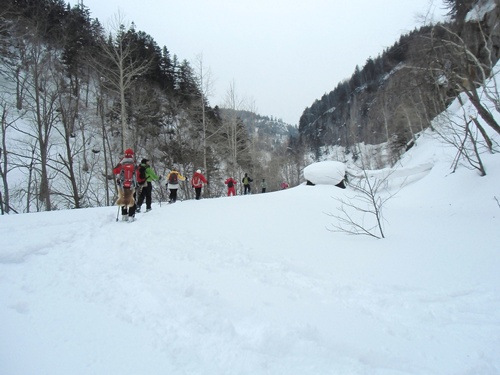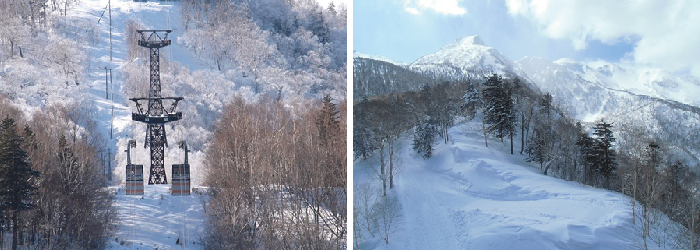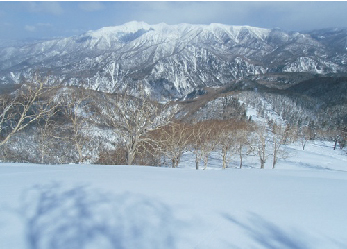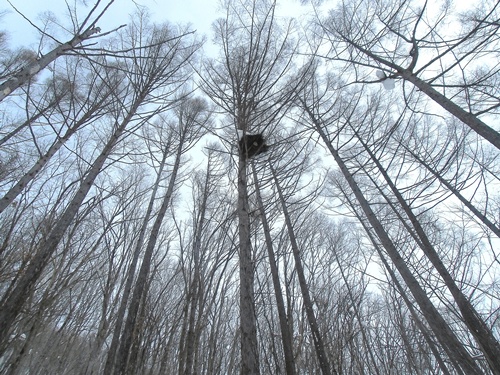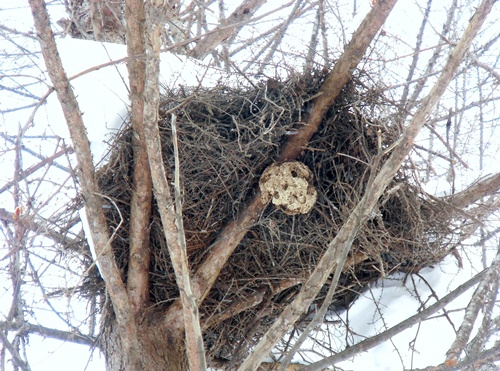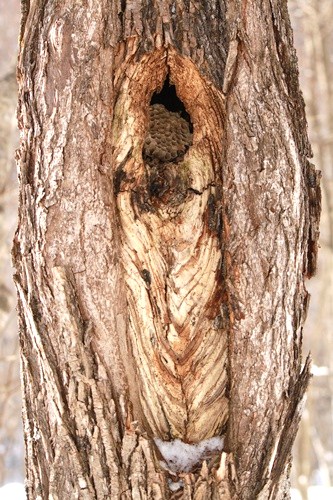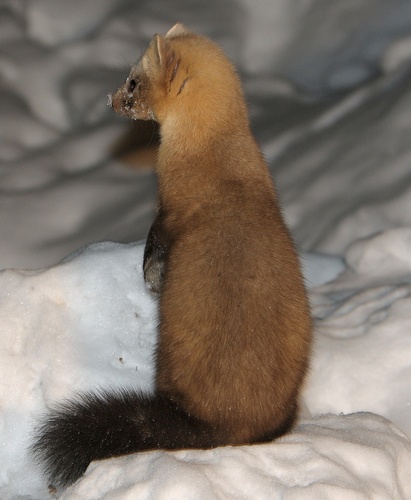The daytime temperature outside the center today reached +2°C. It was the first time since February 27 that the temperature climbed above 0°C.
Amid the higher temperatures, the Visitor Center held a course on “Obako and Hakonoue.” A total 15 people participated. (Originally, the course was scheduled to study Tokachi Mitsumata, however the plan was changed due to concerns about the snow there.)
Obako is a popular sightseeing spot in Sounkyo. The course featured a snowshoe walk to the upper area of Obako.
The name Hakonoue is often used to refer to all of the cliffs of columnar jointing near Obako.
However, originally, it was noted as a third-order triangulation point on a line linking the first-order triangulation points of Mt. Asahi and Mt. Murii.
Entering the stream valley, one can see that both banks are formed by columnar jointing. The towering rocks create quite an imposing scene.
The columns (made of Sounkyo welded tuff) were formed about 30,000 years ago when volcanic ejecta from Ohachidaira became a pyroclastic flow that buried low-lying areas and valleys and then, later, hot deposits there cooled and hardened.
The area is covered by coniferous trees (with some birch). One can imagine that it took a very long time for these trees to become established.
There is little soil in the area, and thus those trees that cannot extend their roots down deeply are prone to toppling. In particular, many trees that were knocked down by the snow, rock collapses, rain, and other causes could be seen in the stream valley.
Photo: Course participants walking in upper Obako Mar. 16
Amid the higher temperatures, the Visitor Center held a course on “Obako and Hakonoue.” A total 15 people participated. (Originally, the course was scheduled to study Tokachi Mitsumata, however the plan was changed due to concerns about the snow there.)
Obako is a popular sightseeing spot in Sounkyo. The course featured a snowshoe walk to the upper area of Obako.
The name Hakonoue is often used to refer to all of the cliffs of columnar jointing near Obako.
However, originally, it was noted as a third-order triangulation point on a line linking the first-order triangulation points of Mt. Asahi and Mt. Murii.
Entering the stream valley, one can see that both banks are formed by columnar jointing. The towering rocks create quite an imposing scene.
The columns (made of Sounkyo welded tuff) were formed about 30,000 years ago when volcanic ejecta from Ohachidaira became a pyroclastic flow that buried low-lying areas and valleys and then, later, hot deposits there cooled and hardened.
The area is covered by coniferous trees (with some birch). One can imagine that it took a very long time for these trees to become established.
There is little soil in the area, and thus those trees that cannot extend their roots down deeply are prone to toppling. In particular, many trees that were knocked down by the snow, rock collapses, rain, and other causes could be seen in the stream valley.
Photo: Course participants walking in upper Obako Mar. 16
